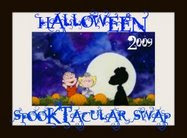 THERE'S A LARGE VARIETY OF NEEDLES AVAILABLE TODAY but the general rules for usage still hold true. Use sharp points for woven fabrics, ball-point needles for knits and universal points for both wovens and knits. Needle sizes are usually marked with European and American numbers, with the European number first. Needle sizes range from 60/8 (finest) to 120/19 (thickest).
THERE'S A LARGE VARIETY OF NEEDLES AVAILABLE TODAY but the general rules for usage still hold true. Use sharp points for woven fabrics, ball-point needles for knits and universal points for both wovens and knits. Needle sizes are usually marked with European and American numbers, with the European number first. Needle sizes range from 60/8 (finest) to 120/19 (thickest).
Ball-point/stretch needles have a slightly rounded tip that goes between the threads of a knit fabric--available in sizes 70/10 through 100/16.
Sharp (Microtex) needles have a sharp point to pierce the threads of woven fabric--good for heirloom sewing and quilt piecing. Available in sizes 60/8 through 90/14.
Universal needle points are slightly rounded for use with knit fabrics, yet sharp enough for wovens--available in sizes 60/8 through 120/19.
Denim/jeans needles have an extra-sharp point and stiff shank for stitching denim, heavy faux leather and other densely woven fabrics. Available in sizes 70/10 through 110/18.
Leather needles have a wedge-shaped point to penetrate leather, suede, heavy faux leather and nonwoven fabrics--available in sizes 80/12 through 110/18.
Machine-embroidery needles are designed to prevent thread shredding and breakage when sewing dense designs with rayon, metallic and other embroidery threads. Available in sizes 75/11 through 90/14.
Metallic needles feature a longer eye, fine shaft and sharp point to eliminate thread breakage, shredding and skipped stitches. They also work well with monofilament threads. Also known as Metallica, Metafil and Metallic Machine Embroidery--available in sizes 70/10 through 90/14.
Quilting needles have a sharp tapered point to sew through thick layers and across seams--available in sizes 75/11 through 90/14.
Topstitch needles have an extra-sharp point, larger eye and groove to accommodate topstitching thread. Available in sizes 80/12 through 100/16.
Special-purpose needles
These needles are used only with front-to-back threading machines with zigzag features. Make sure your throat-plate needle hole is wide enough to accommodate needle's width, and zigzag width function is set at zero to prevent sideways movement.
![]() Hemstitch (wing) needle
Hemstitch (wing) needle
Uses: Hemstitching or heirloom embroidery on linen and batiste.
Configuration: Has fins on sides of shank to create holes as you sew.
Troubleshooting: Stitch is more effective when needle returns to same needle hole more than once. If needle pushes fabric into needle hole, put stabilizer under fabric.
![]() Twin (double) needle
Twin (double) needle
Uses: Topstitching, pin tucking, and decorative stitching.
Configuration: Two needles on single shaft produce two rows of stitches. Measurement between needles ranges from 1.6mm to 6mm, and needles come with universal, stretch, embroidery, denim, and Metallica points.
Troubleshooting: Be sure throat plate allows for distance between needles.
![]() Triple needle
Triple needle
Uses: Same uses as for double needle.
Configuration: Cross bar on single shaft connects three needles to sew three stitching rows. Comes with universal point in 2.5mm and 3mm widths.
Troubleshooting: Same as for double needle.
![]() Spring needle
Spring needle
Uses: Free-motion stitching with dropped feed dogs.
Configuration: Has wire spring above point to prevent fabrics from riding up onto needle, eliminating need for presser foot.
Troubleshooting: Before using, practice free-motion stitching with heavy regular needle, paper, and dropped feed dogs. Don't pull paper/fabric; instead gently guide it through stitching. Wear safety glasses for free-motion work, since needles often break.








3 comments:
I didn't know you worked in a fabric shop Dayna.Very informative and helpful article.
Excellent series, Dayna! I didn't know you worked in a fabric shop, either.
There ao many needles arn't there! I managed to stun my younger students by showing them the range of scissors available to use. You could have heard a pin drop!
Post a Comment